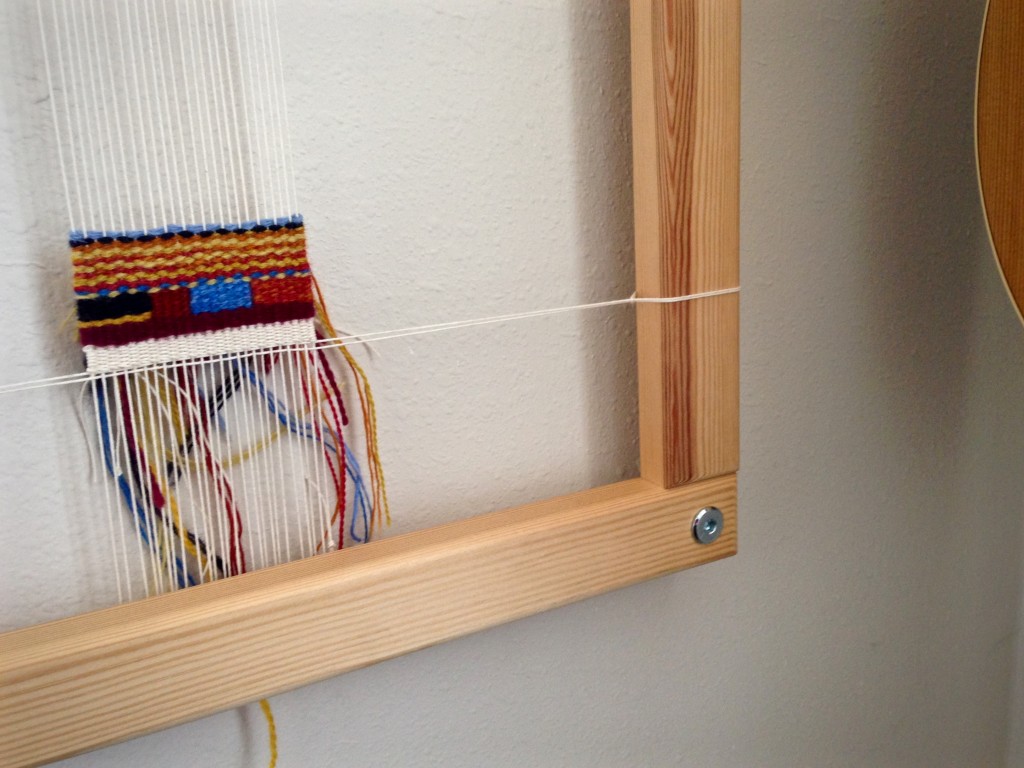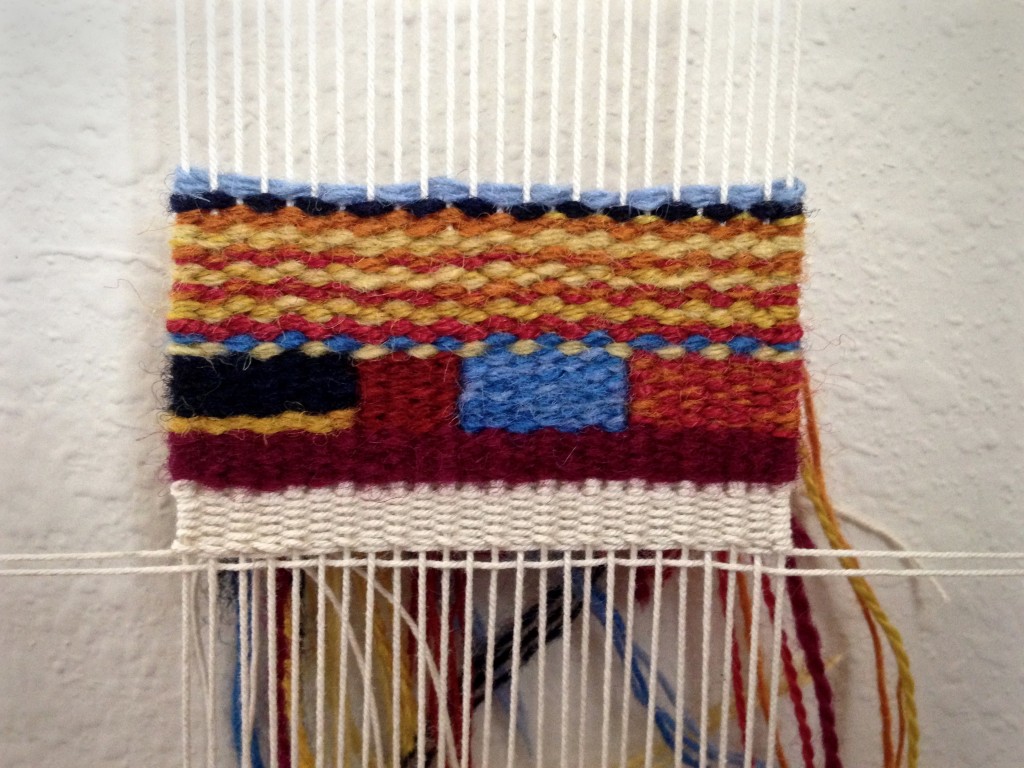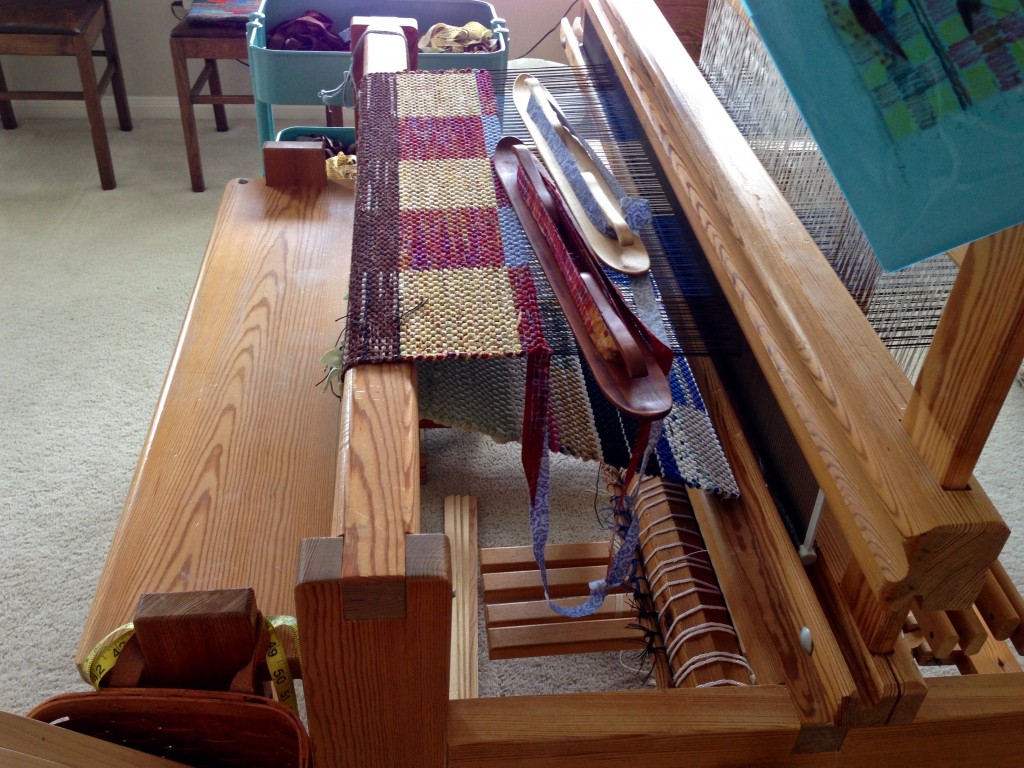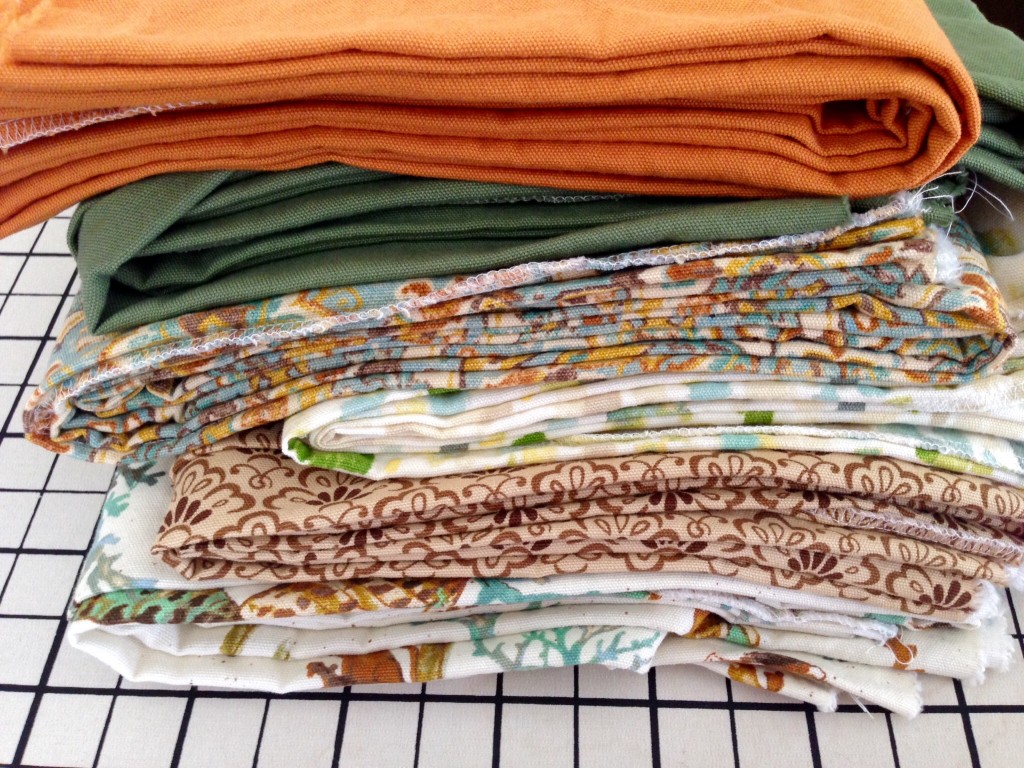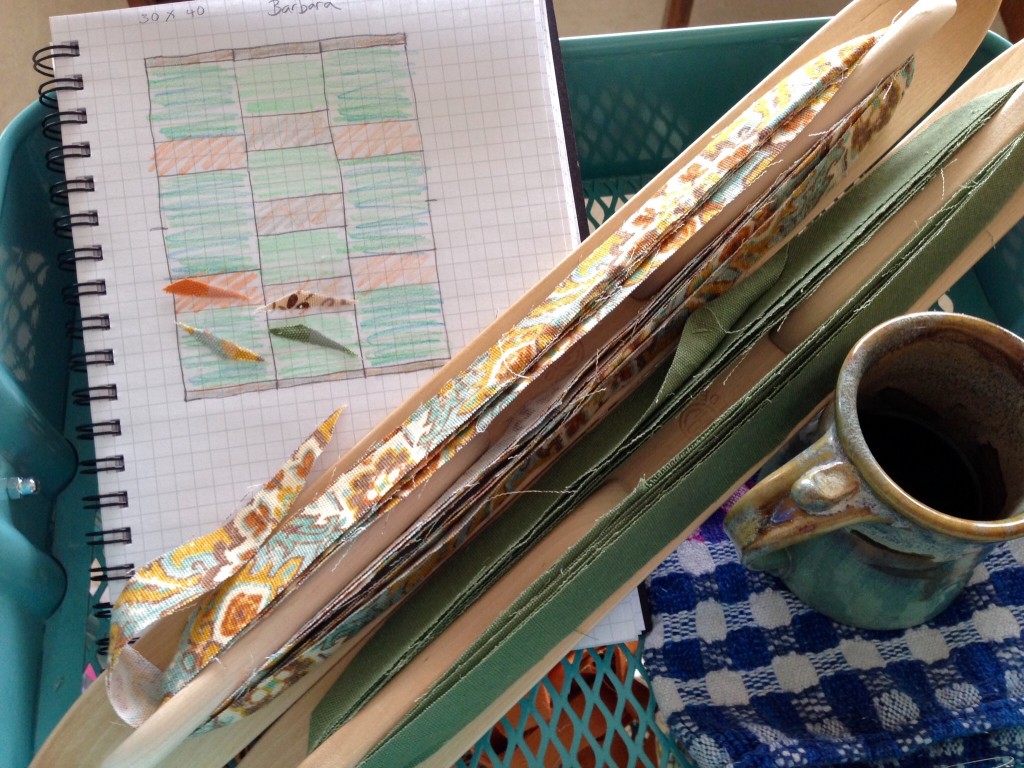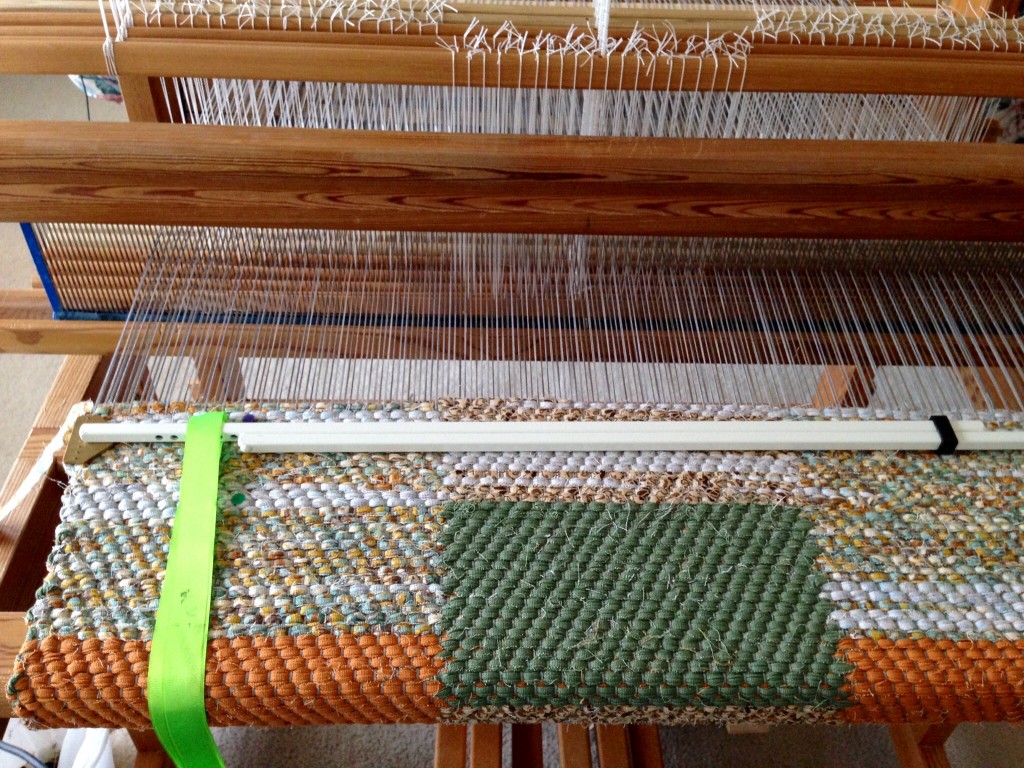This pattern is not as complicated as it looks. Remember, this is plain weave with only two treadles. How can plain weave look so intricate? Using two sizes of threads does the trick. Really, it’s that simple.
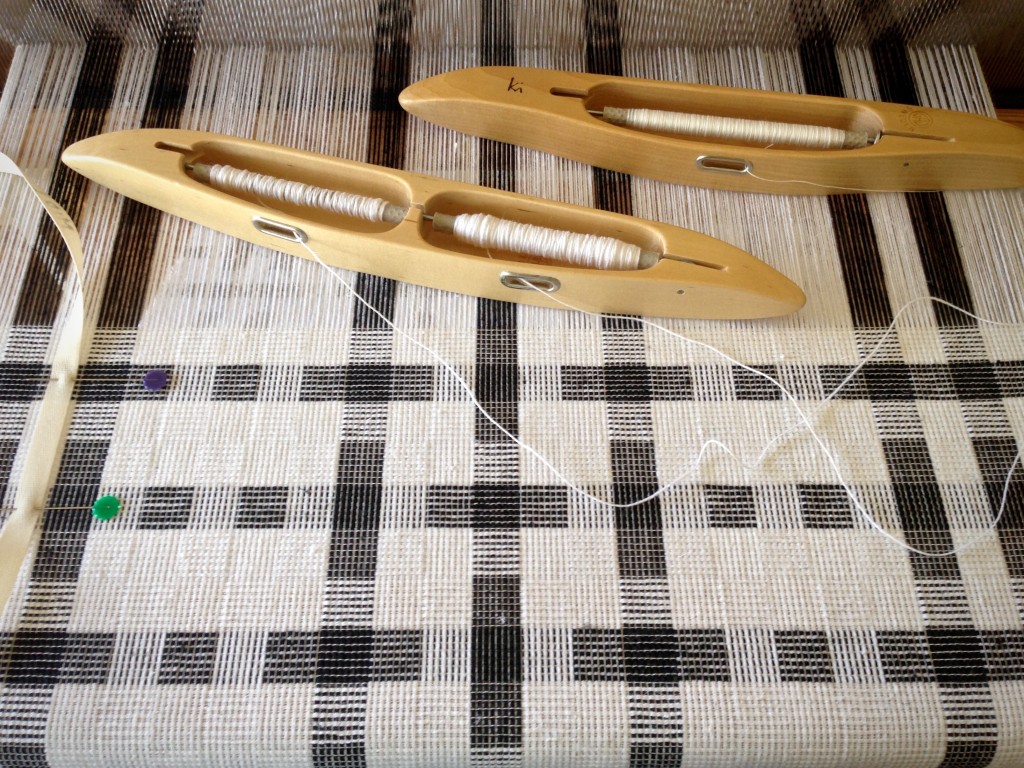
The treadling is the easiest it can be. The shuttles, on the other hand, are more complicated. With two shuttles, you must interlock wefts around the outer warp ends. When the order of the shuttles is reversed every few centimeters, as it is here, it keeps you on your toes. And then there is the double bobbin shuttle. Are you able to wind two quills that have nearly equal amounts of thread? Not to mention catching a shuttle that has two quills unwinding.
We look at the detail and busyness around us and see our lives as intricately complicated. But zoom out and take the view from heaven. From that perspective, a thousand years goes by in one day. Humans come and go, generation after generation. My seemingly complex life is simple plain weave with the grand weaver skillfully throwing the shuttles to make meaningful patterns. Let this breath of time that we call life leave a mark of virtue that lasts for generations.
May you leave a lasting impact for the good of others.
Happily Weaving,
Karen


